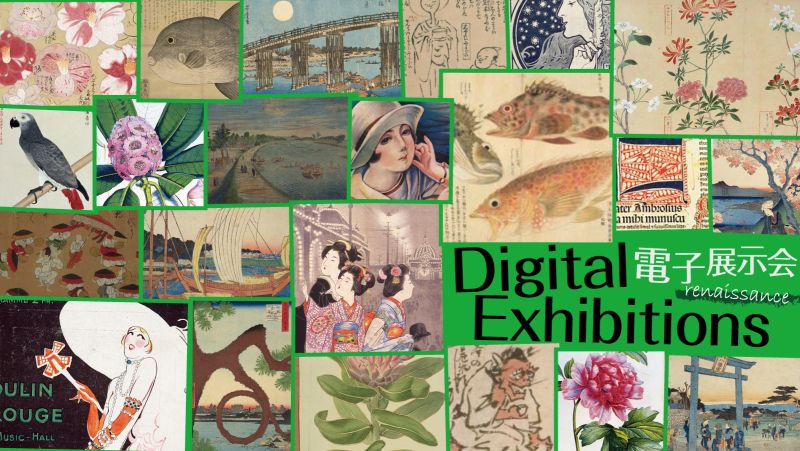Uke-e good luck charms

Regardless of the era, many people enjoy reading their fortunes and anticipating events of the coming year. From the Edo period through the Meiji era, many people enjoyed telling their fortunes by casting the I Ching. Originating in ancient China, the I Ching was based on yin-yang cosmology and the five elements of wuxing, but also had a unique development in Japan known as Onmyōdō, which became a part of everyday life for ordinary people during the Edo period.
and the five elements of wuxing, but also had a unique development in Japan known as Onmyōdō, which became a part of everyday life for ordinary people during the Edo period.
According to Onmyōdō, there are cycles of good fortune and bad fortune that follow the Chinese zodiac. Uke are the cycles of good fortune, which were believed to continue for seven years. Those whose cycle entered uke would decorate their home or receive as a gift a magical picture called uke-e, as shown below.
The characters in this picture read Kinsei no hito uke hairu. Kinsei no hito refers to anyone born in a year with the attribute of metal according to the five elements of wuxing, which are wood, fire, earth, metal, and water. Uke hairu indicates that this person will enter a cycle of good luck, or uke. Also shown are the ages of those who were born in a year with the attribute of metal, and there is a note that they will enter uke “this coming February 1.” This nishiki-e artwork also portrays objects featuring the Japanese character fu, which is associated with fuku or good fortune. Shown in the picture are a fuku-onna (good fortune woman), fuji (wisteria), fukubotan (peonies), and other things that begin with fu.
The next picture is an uke-e for kasei nenrei or those born in a year with the attribute of fire. In the foreground, a Japanese doll called Fukusuke, which is believed to bring good fortune, is joyfully dancing while holding a fan adorned with the kanji for fuku or good fortune. In the background is a treasure ship for the Seven Gods of Good Fortune. Mt. Fuji is painted on the sail, and the cargo includes sacks of futamata daikon (forked radish), fugu (blowfish), fukujuso (adonis plant), and fuji (wisteria).
